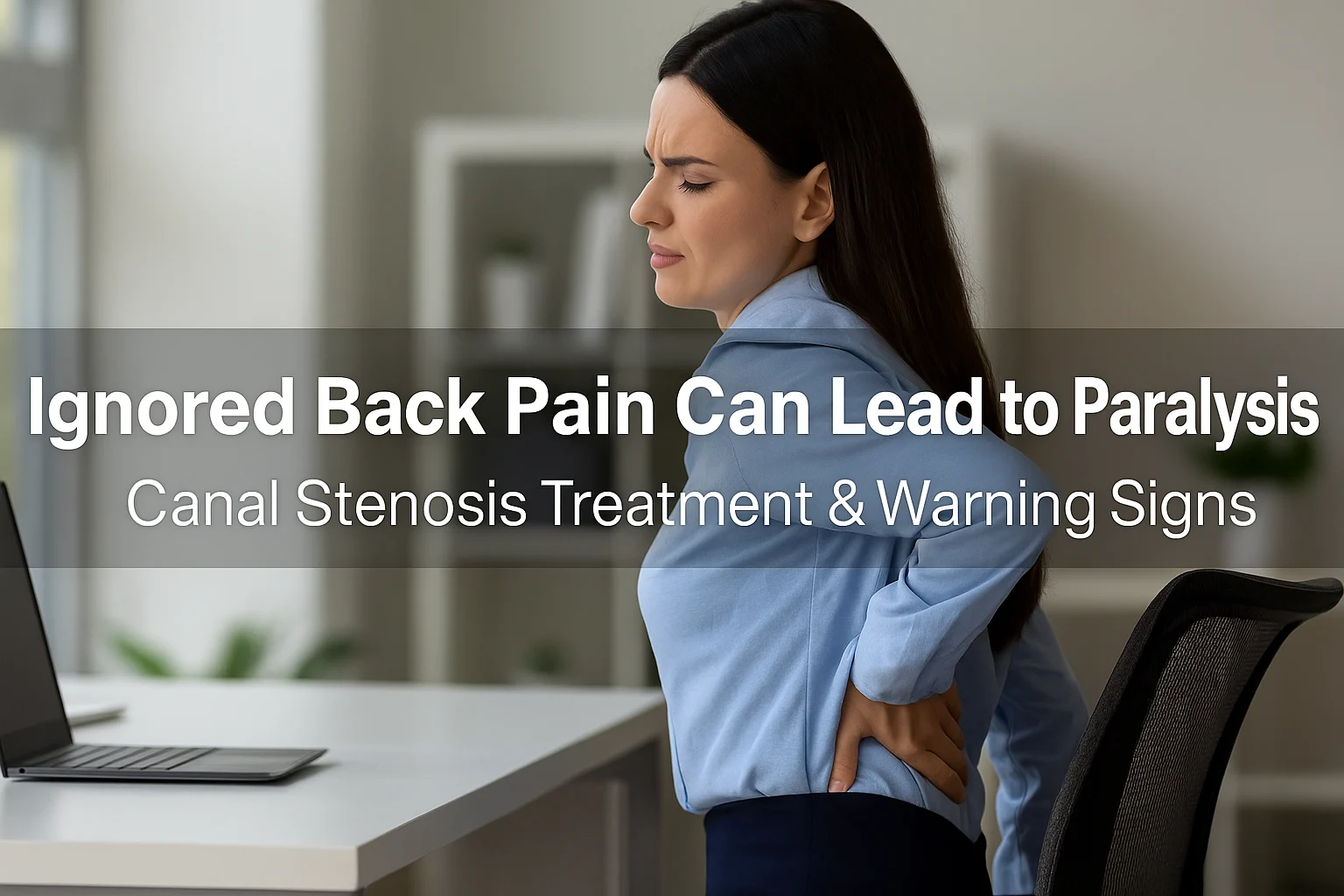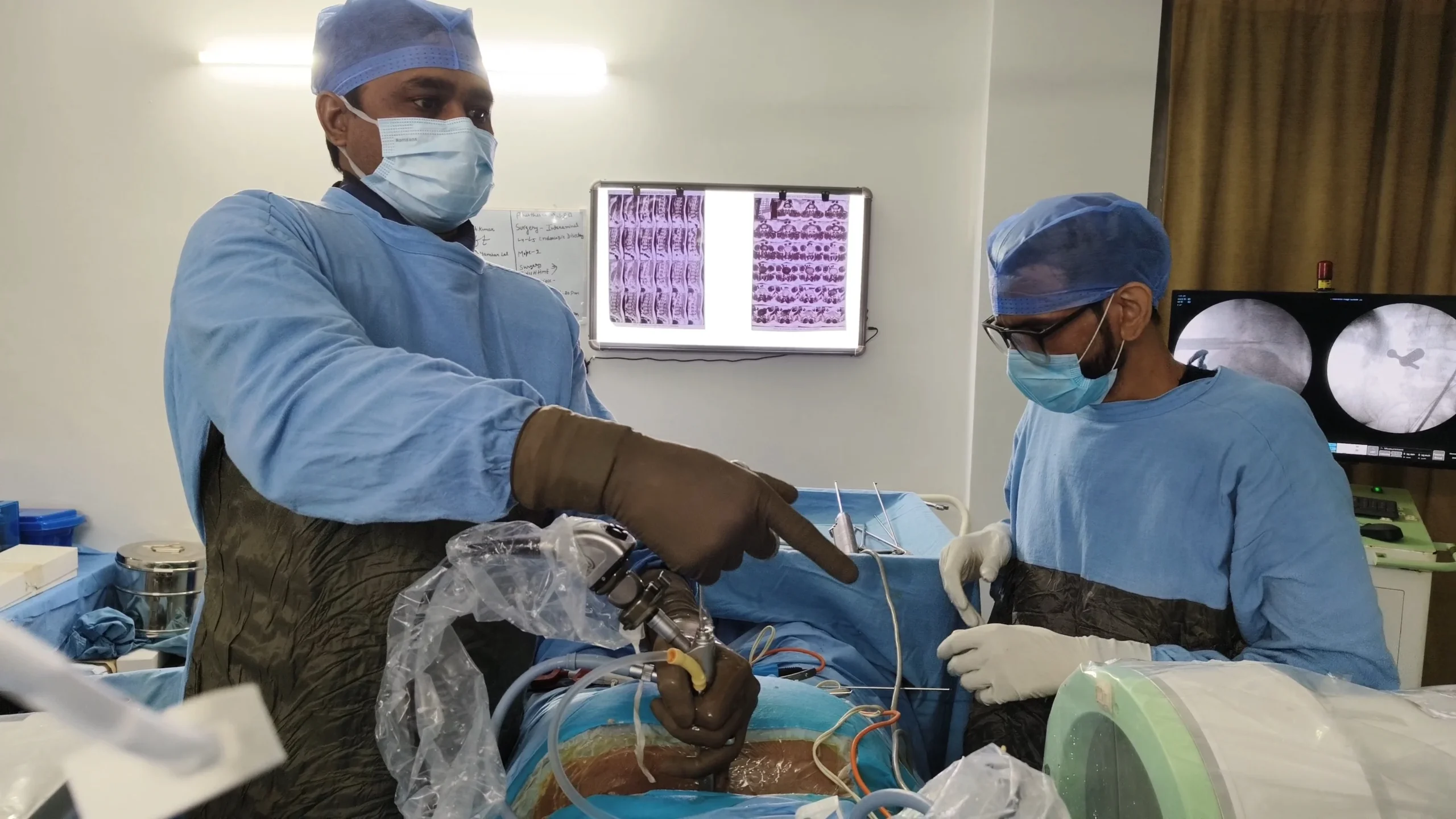Canal Stenosis Treatment is crucial for patients who ignore persistent back pain, as it can silently progress into paralysis. A recent case of a 40-year-old software engineer highlights this risk—he dismissed his lower back pain as a minor issue, but eventually developed severe canal stenosis that caused partial paralysis. His story is a reminder for young professionals to take chronic back pain seriously and seek early medical intervention.
What is Canal Stenosis and Why is Lumbar Canal Stenosis Treatment Important?
Canal stenosis is the narrowing of the spinal canal that compresses nerves and the spinal cord, leading to pain, tingling, numbness, and sometimes loss of mobility. Though commonly linked with aging, it is increasingly affecting young professionals due to long sitting hours, poor posture, and untreated spine disorders. Early lumbar canal stenosis treatment can prevent long-term nerve damage, restore mobility, and help patients avoid major surgery.
The Silent Warning Signs You Should Never Ignore
Many patients delay proper canal stenosis treatment until their symptoms become severe. Early red flags include:
- Persistent lower back pain that doesn’t improve with rest
- Radiating pain down the legs (sciatica)
- Numbness, tingling, or weakness in arms or legs
- Difficulty walking or standing for long hours
- Loss of bladder or bowel control in extreme cases
Ignoring these signs allows the condition to progress silently, making spinal canal stenosis treatment more complex. Early diagnosis gives patients the best chance to avoid surgery and recover mobility.
Why Young Professionals Are at Higher Risk
Corporate employees, IT professionals, and students often sit for 10–12 hours daily in front of screens. This sedentary lifestyle weakens spinal muscles and accelerates disc degeneration, leading to slipped discs and canal stenosis. Many mask pain with over-the-counter painkillers, delaying proper lumbar canal stenosis treatment until irreversible damage occurs.
Lumbar Canal Stenosis – The Hidden Culprit Behind Severe Back Pain
Lumbar canal stenosis affects the lower spine and is one of the most common causes of chronic back pain in young and middle-aged patients. It often begins with mild discomfort but can quickly progress to nerve compression that disrupts daily life. Our hospital’s lumbar canal stenosis treatment focuses on relieving nerve pressure, reducing pain, and restoring function through minimally invasive techniques.
Advanced Non-Surgical Canal Stenosis Treatment Options
Canal stenosis treatment works best when the condition is detected early. Prevention strategies include:
- Using ergonomic chairs and proper posture
- Taking short breaks from long sitting hours
- Practicing regular stretching and strengthening exercises
- Maintaining healthy weight
- Consulting a spine specialist if chronic back pain persists
Early intervention and lifestyle management can help prevent spinal canal stenosis treatment from becoming a lifelong necessity.
Prevention is Better Than Cure
At The Spine & Pain Hospital, Gurgaon, our specialists use evidence-based therapies that avoid open spine surgery. These include:
- Endoscopic Spine Procedures – precise treatment for slipped discs and stenosis
- Platelet-Rich Plasma (PRP) Therapy – stimulates healing of damaged tissues
- Ozone Therapy – reduces disc pressure and inflammation
- Radiofrequency Ablation (RFA) – relieves chronic nerve-related back pain
These minimally invasive options make canal stenosis treatment in Gurgaon safer, faster, and more effective.
Frequently Asked Questions (Understanding Lumbar Canal Stenosis)
Canal stenosis, also known as spinal stenosis, is a condition where the space within the spinal canal becomes narrow. This narrowing can compress the spinal cord or surrounding nerves, often leading to pain, numbness, tingling, or limited mobility.
Key symptoms include:
- Persistent lower back pain
- Pain, numbness, or tingling that radiates down the legs (sciatica)
- Leg weakness or fatigue during walking
- Pain that worsens when standing or walking, but improves when sitting or bending forward
- In advanced cases, difficulty controlling bladder or bowel function
While uncommon, severe or untreated canal stenosis can result in long-term nerve damage or partial paralysis. Early diagnosis and treatment are essential to avoid permanent complications.
Our diagnostic process includes:
- A comprehensive review of your medical history and symptoms
- Physical and neurological evaluations
- Imaging tests such as X-rays, MRI, or CT scans
- In some cases, nerve function tests like EMG or myelogram
Treatment usually begins with non-surgical methods:
- Customized physical therapy programs
- Anti-inflammatory and nerve pain medications
- Epidural steroid injections
- Advanced non-surgical procedures like PRP therapy, ozone therapy, RFA, and endoscopic decompression
If symptoms persist or worsen, surgical options such as decompression, laminectomy, or spinal fusion may be recommended. Each treatment plan is tailored to your needs.
Surgery may be advised if:
- There is significant nerve compression
- Non-surgical treatments have not provided relief
- Symptoms such as weakness, difficulty walking, or bladder/bowel issues are progressing
Surgical treatment is aimed at relieving nerve pressure and restoring spinal stability.
While you can’t prevent aging or genetic factors, you can take steps to reduce your risk:
- Maintain good posture and use ergonomic furniture (especially important for corporate professionals)
- Perform regular spine-strengthening and flexibility exercises
- Maintain a healthy weight
- Avoid smoking
- Seek medical evaluation for any persistent back pain
Early intervention plays a key role in managing progression.
Recovery depends on the surgical procedure and your overall health:
- Minimally invasive procedures typically allow for faster recovery (within weeks)
- More extensive surgeries like spinal fusion may require several months for full healing
At Spine Pain Hospital, we provide a personalized recovery plan and support every step of the way.
Need more help?
Our team at Spine Pain Hospital is here to guide you through diagnosis, treatment, and recovery. Whether you’re a working professional dealing with back pain or a patient seeking expert spine care — we’re committed to helping you regain comfort and mobility.





